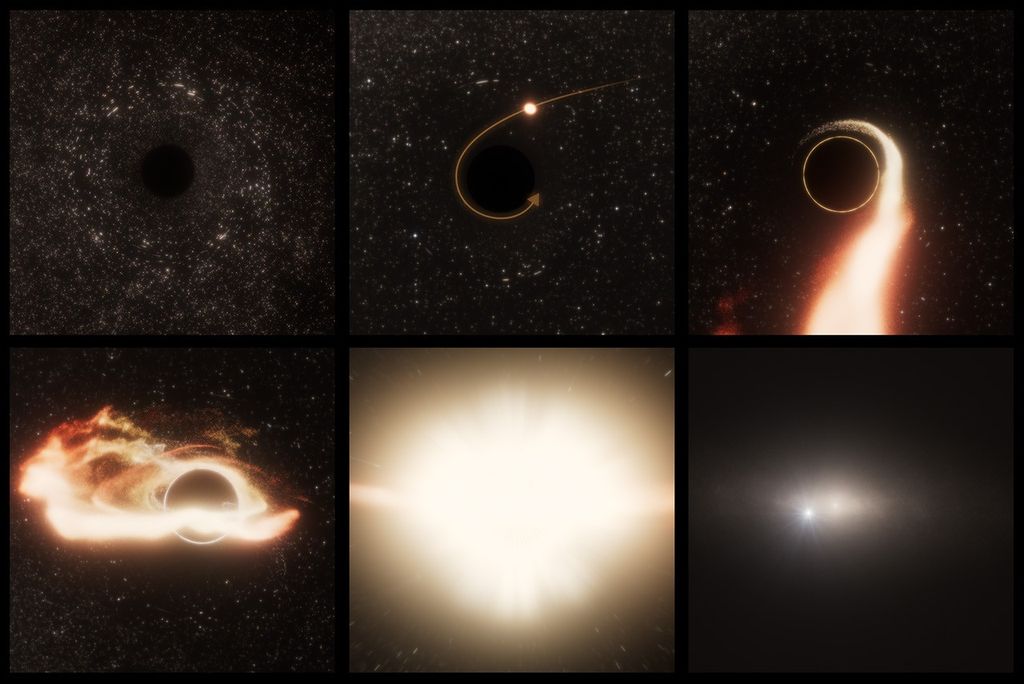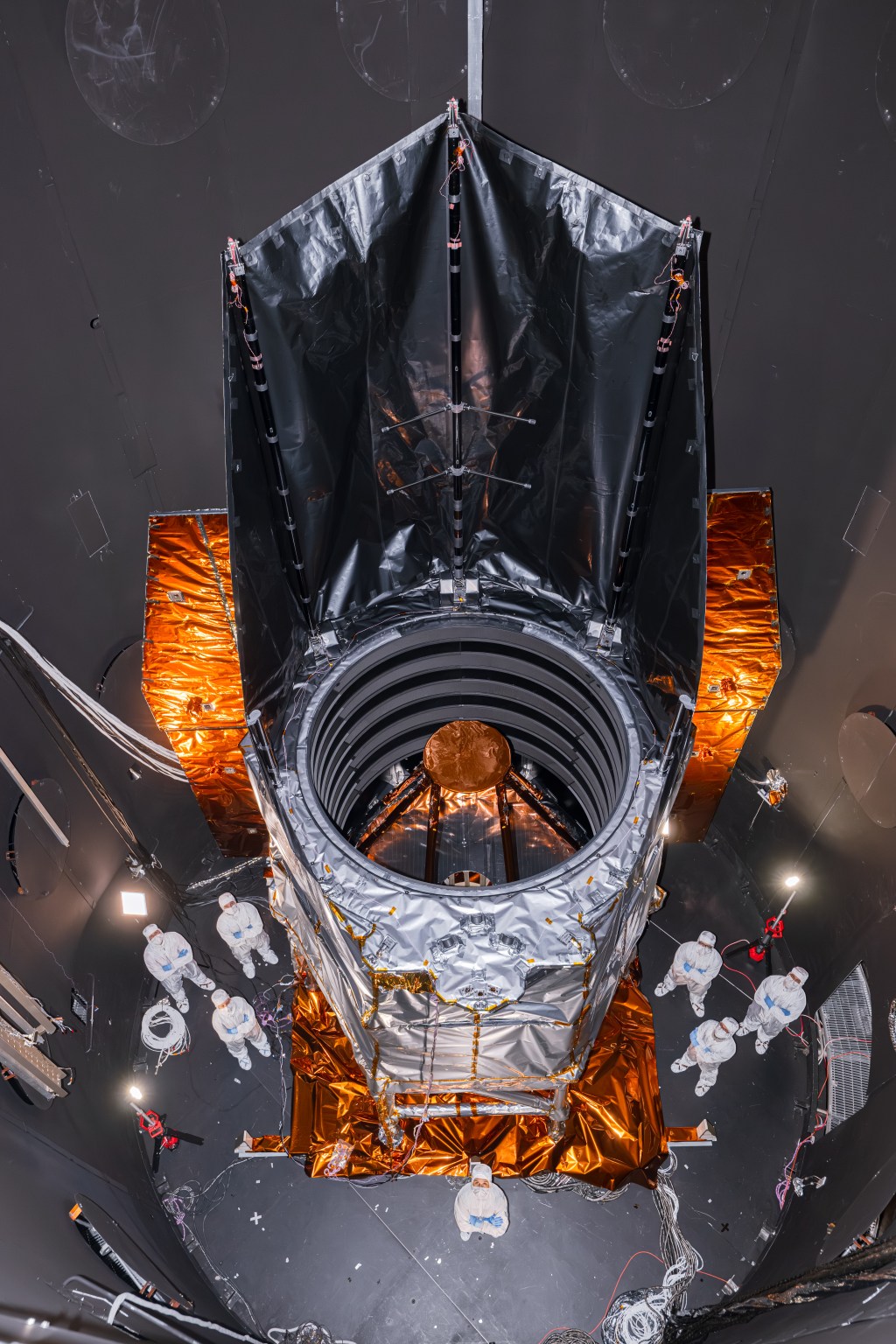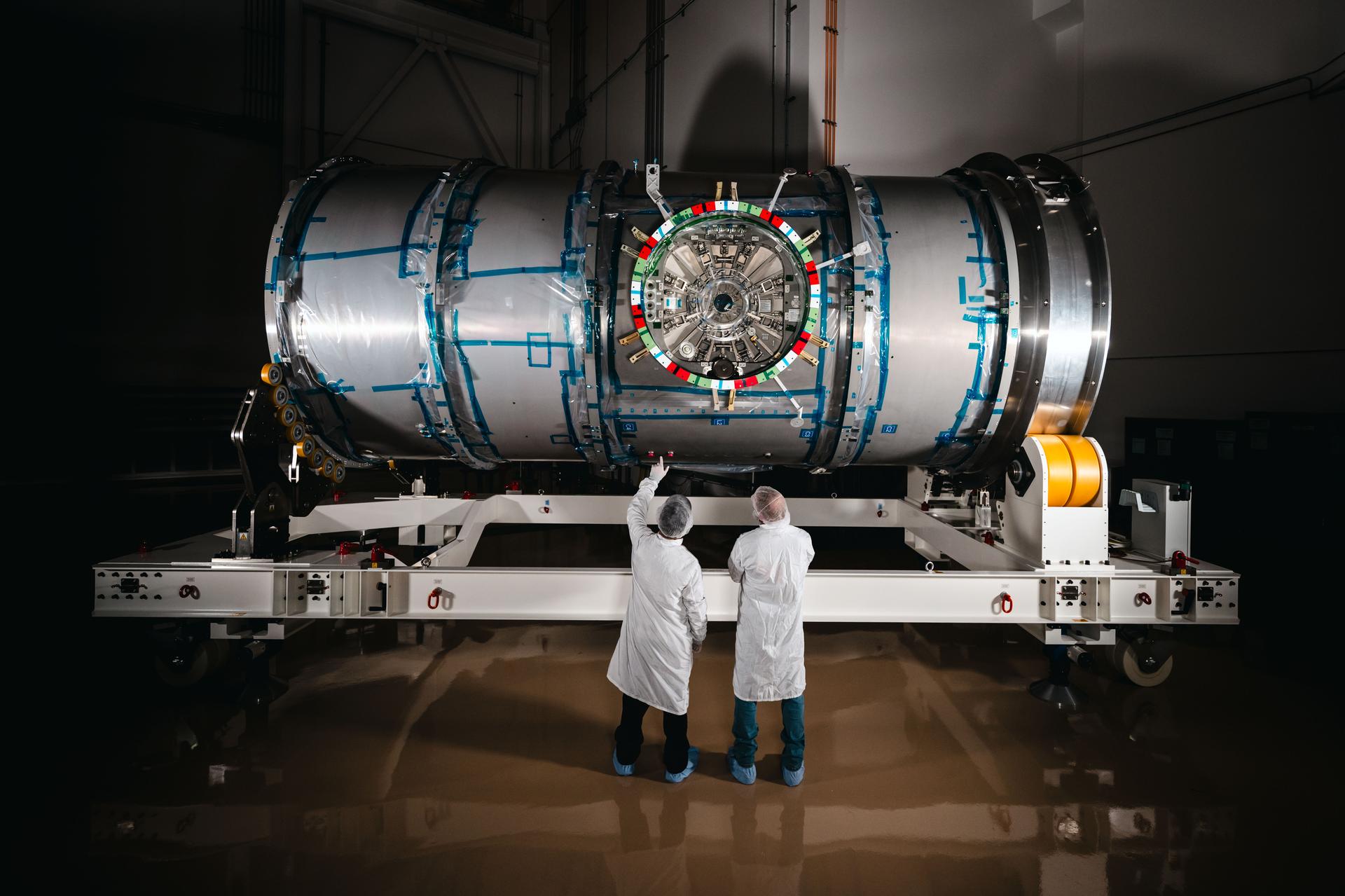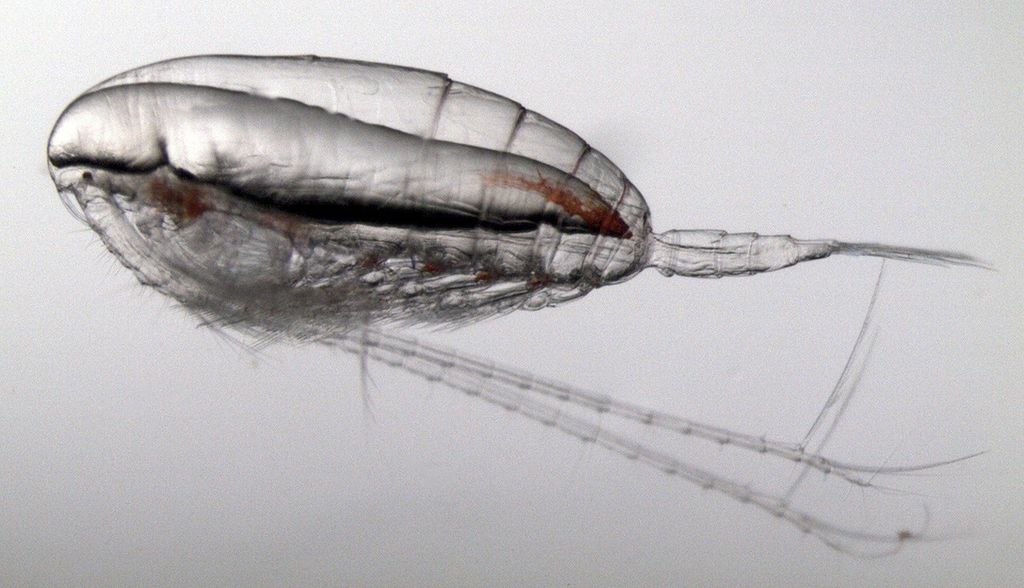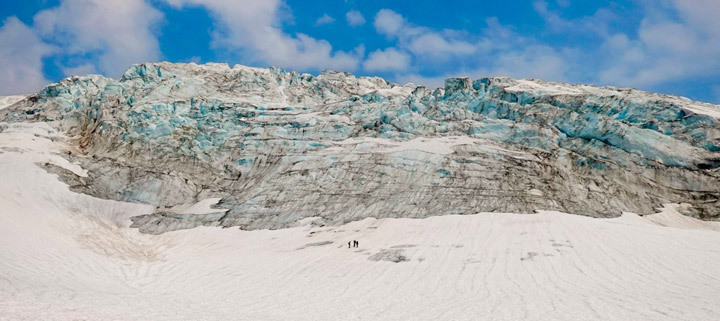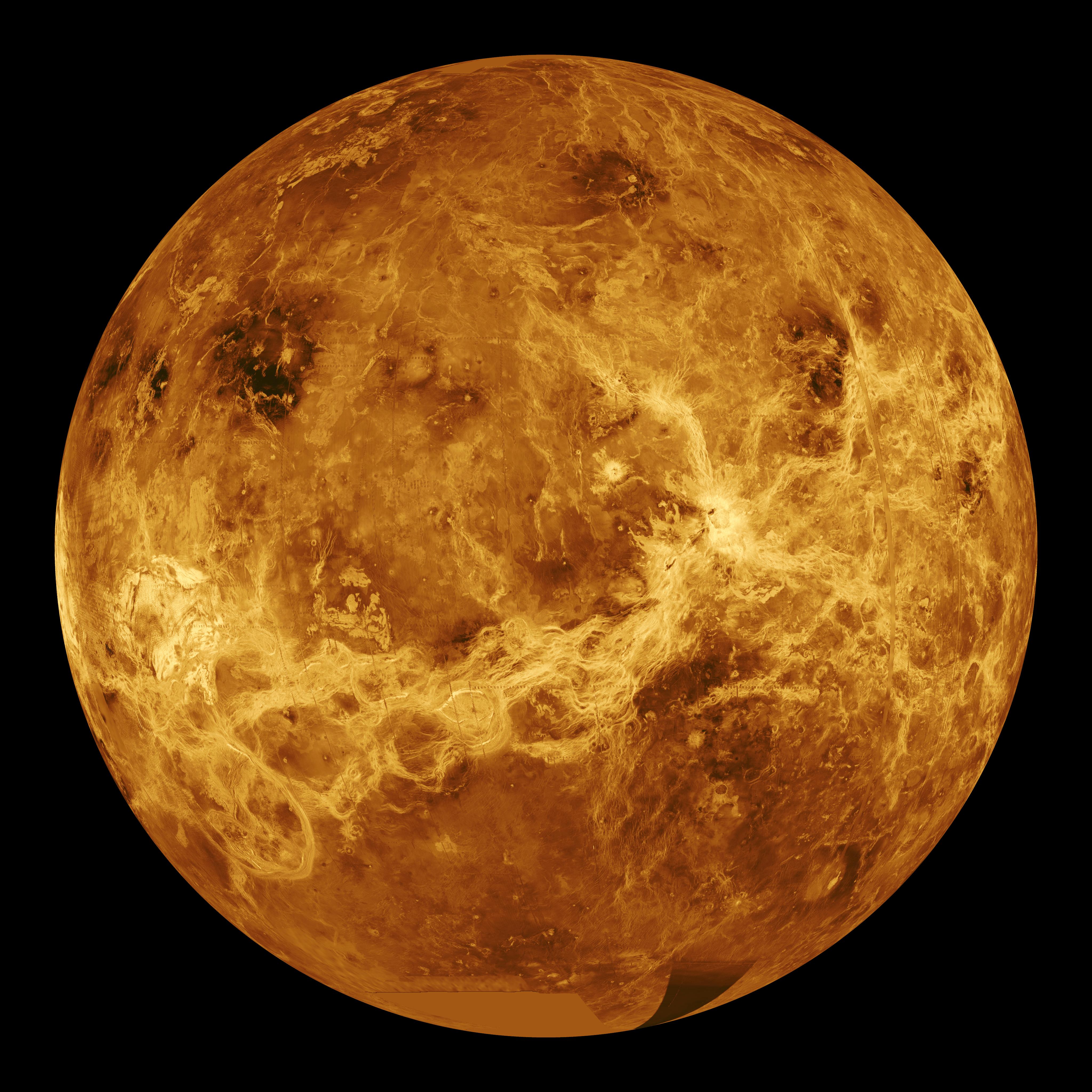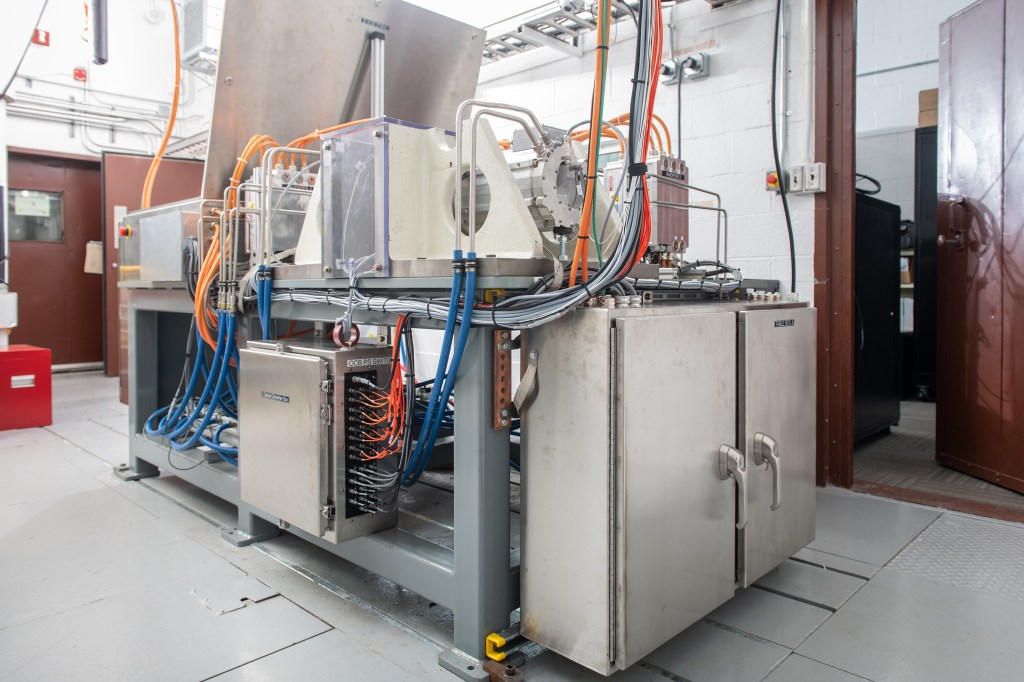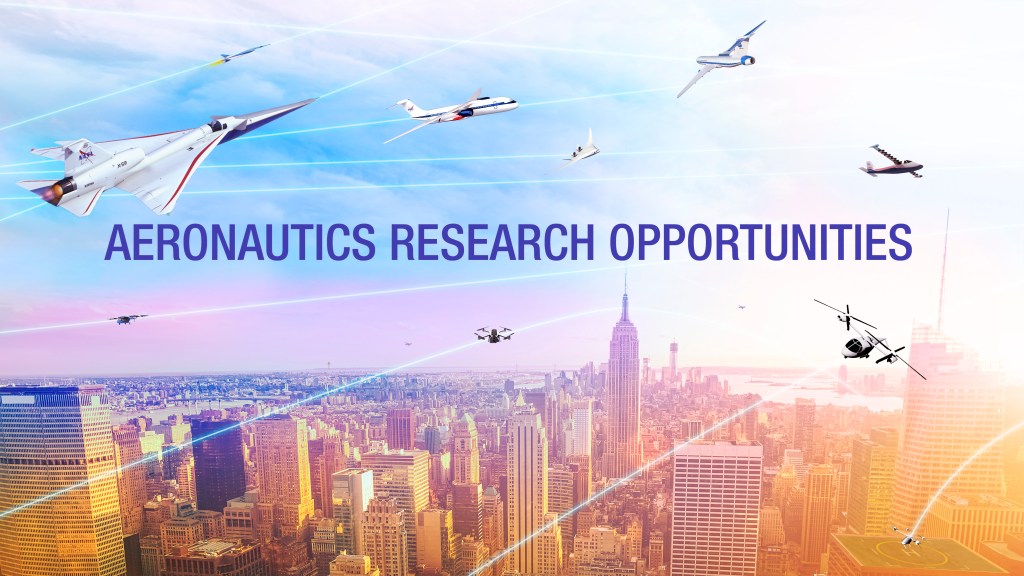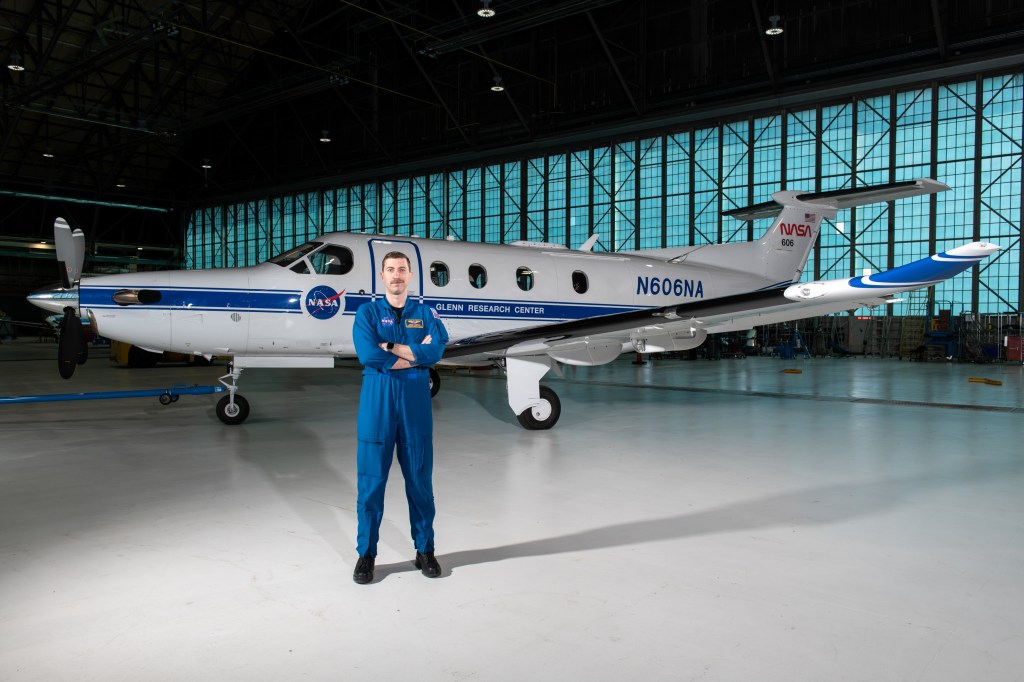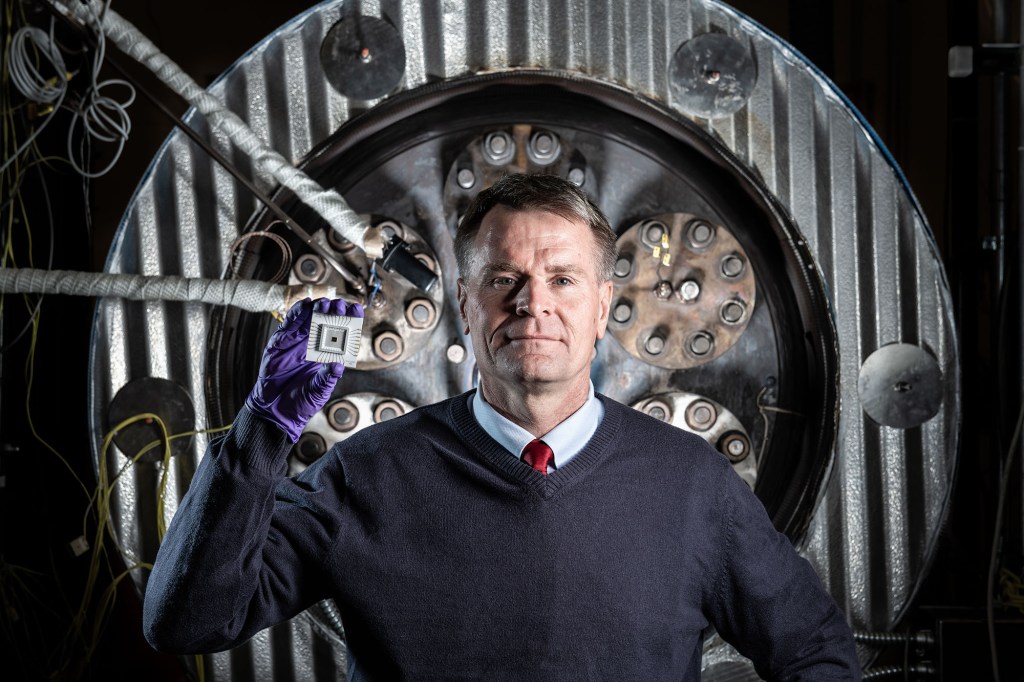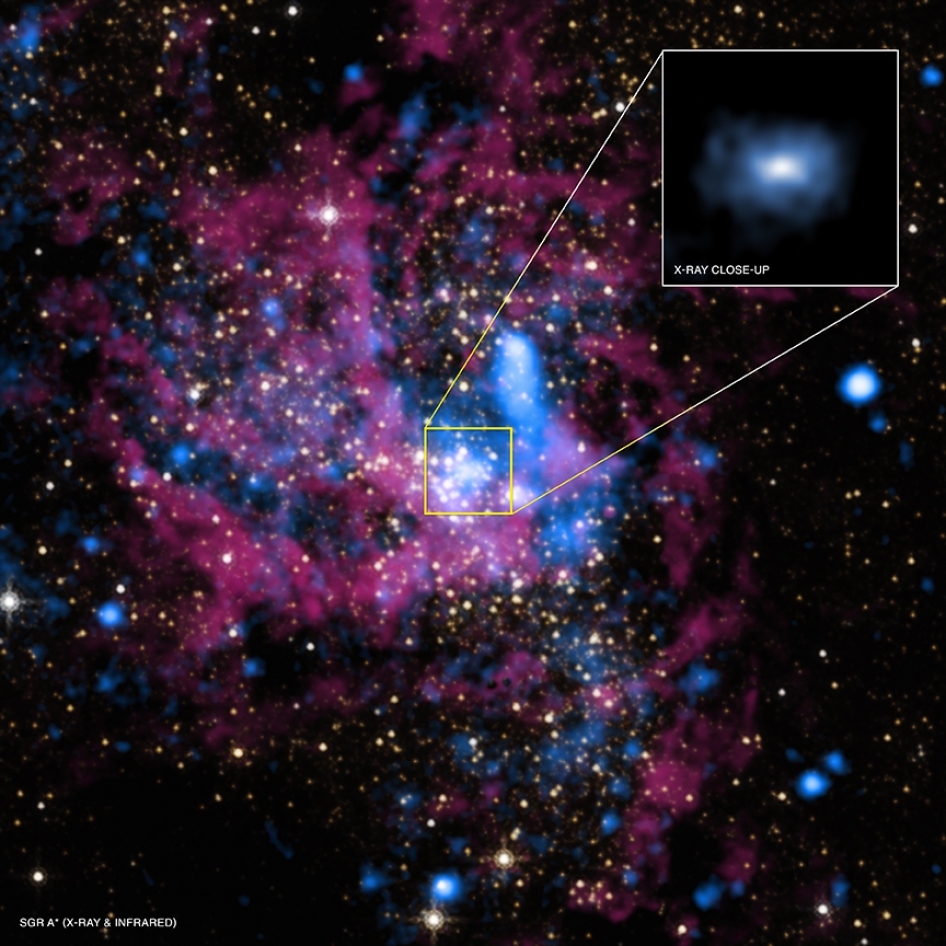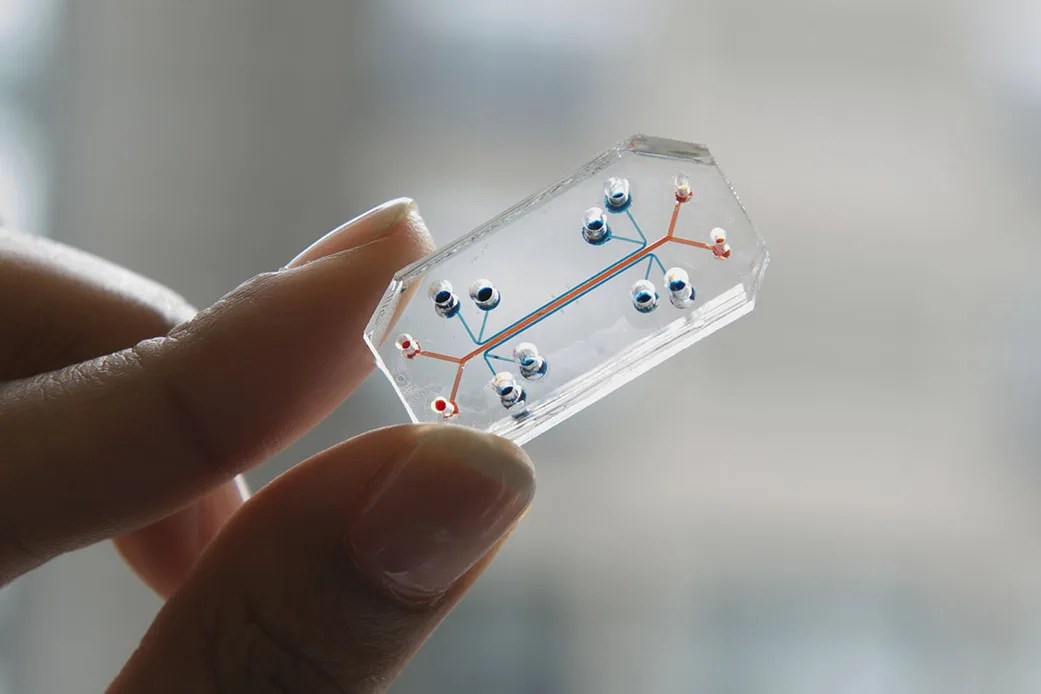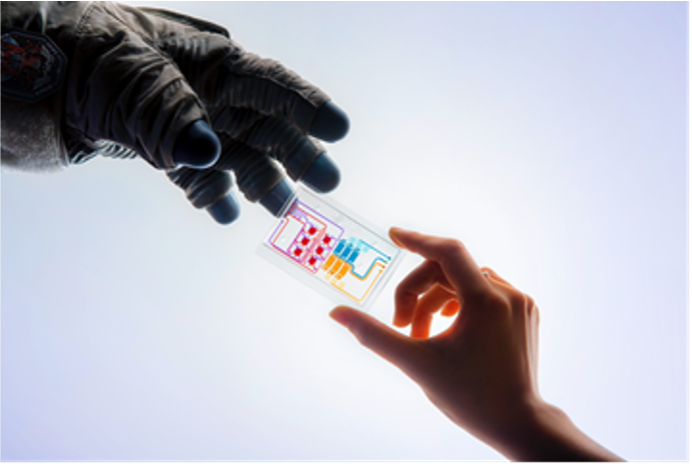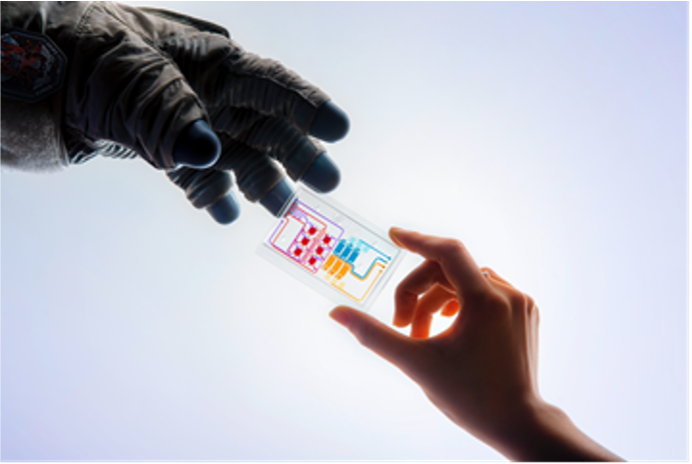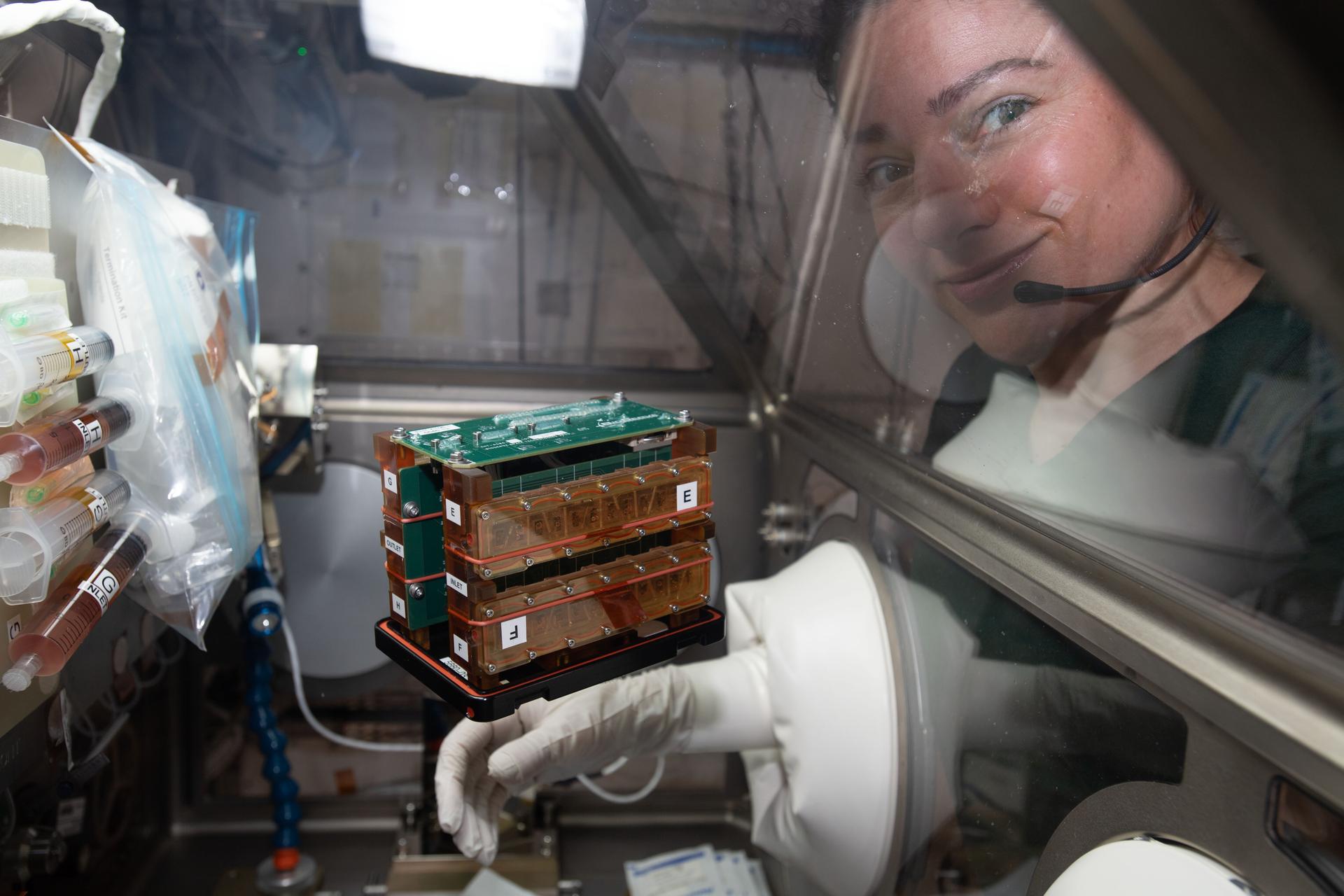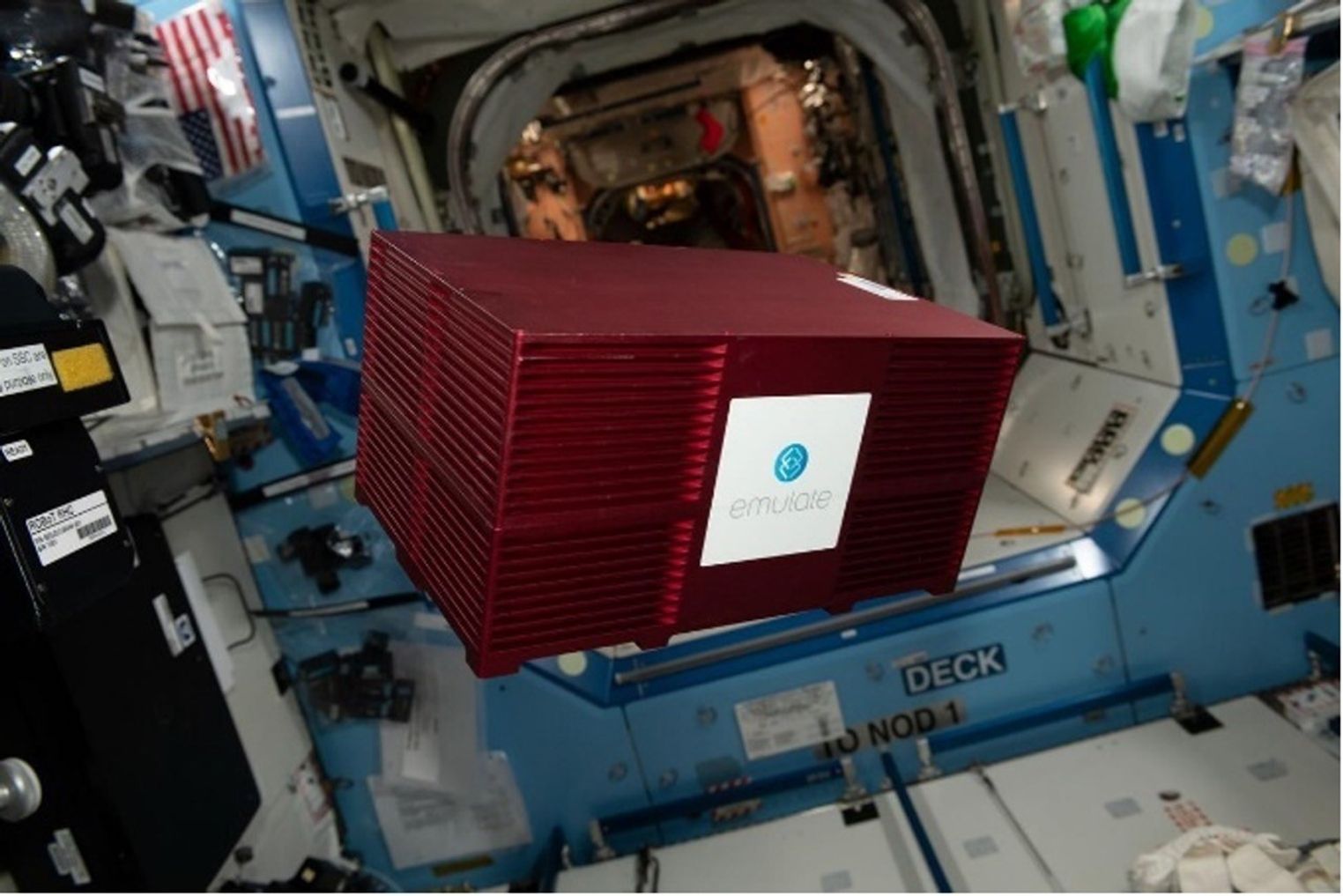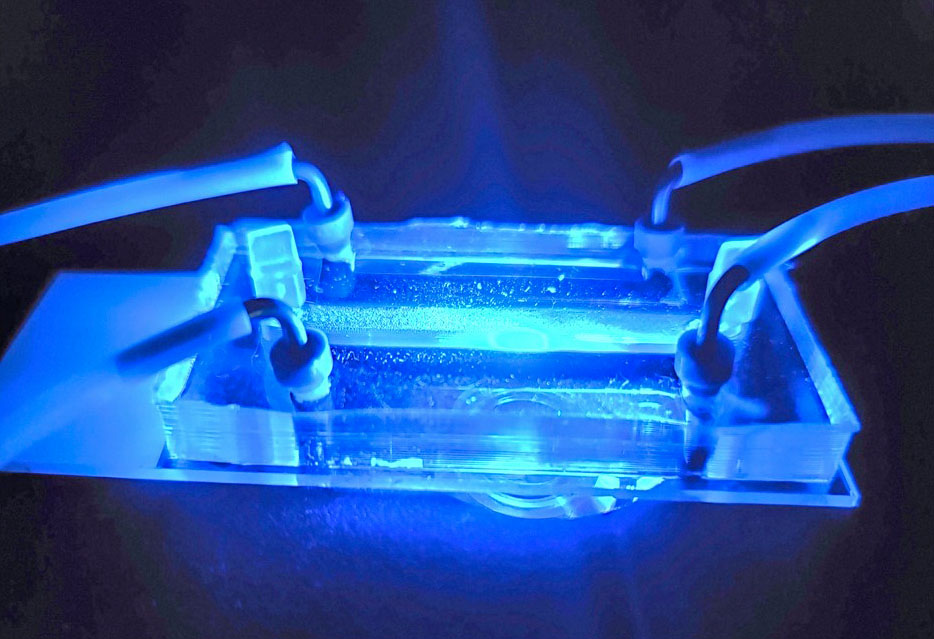An Avatar for Studying Human Health: Tissue Chips
Listen to our discussion about Tissue Chips with NASA Division Director of Biological & Physical Sciences, Lisa Carnell.
0:00 / 0:00
High school student Kyle Benjamin speaks with Dr. Lisa Carnell, program scientist of NASA’s Translational Research Program, about her work using tissue chips to study human biology in space -- and what it could mean for personalized medicine back on Earth. This podcast was hosted by Ideaventions Academy as part of a student pilot program and reflects the contributions of many behind-the-scenes students.
AUDIO TRANSCRIPT:
Kyle Benjamin:
My name is Kyle Benjamin and I will be your host for today. Joining me today is Dr. Lisa Carnell, the program scientist for translational research at nasa. Dr. Carnell, thank you for joining us.
Lisa Carnell:
Thank you. It's a pleasure to be here with you and participating in this podcast to talk about some really exciting science going on at nasa.
Kyle Benjamin:
For starters, tell us a little bit about yourself. Where did you grow up? Where did you go to school? High school mainly.
Lisa Carnell:
I grew up in Iowa, a small town, Fort Dodge, Iowa, and worked the corn fields growing up. I moved to Virginia after high school and got my bachelor's and master's degrees in mechanical engineering. Worked for quite a while studying total joint replacements. I was very interested in biomedical engineering at the time, but it was not a really popular specialty to go into, so I kind of created my own program. I worked on NASA polymers to try to replace them for the bearing materials in total joint replacements. And then took a job working in private industry for about six years, commercializing NASA technology and worked with Medtronic to move NASA polymers and to defibrillator and pacemaker leads that are now implanted in humans, which is very exciting. And I went back to graduate school and got my doctorate in biomedical engineering at Duke working with stem cells and creating 3D in vitro models to basically differentiate them into nerve cells. The topic that we have today is near and dear to my heart because what I worked on many years ago is sort of the precursor to where we are today with 3D models.
Kyle Benjamin:
We're wondering today about tissue chips. What are tissue chips? How do they work? What do they look like?
Lisa Carnell:
Tissue chip, as I was saying, it sort of builds off of my predecessor looking at 3D models and the way that the body actually grows. So if you think about your organs and tissues inside, they aren't laying in a flat dish, which is how a lot of cell culture works. You put cells in a dish and you try them out with different drugs and apply different things to them. Well, that doesn't really represent the body. So what's really neat is they've taken a 3D model to a whole new level. So if you think about the body inside your heart, your liver, any of your organs, your skin bones, everything is sort of three dimensional. So you need to have a 3D model. But not only that, if you think about the tissue chips, they actually represent the more systems level. So they take it from 3D to an actual system where you have fluids flowing through, you have air flowing through. If it's a lung model, you have multicellular components because a lot of times tissues are layers of different types of cells. They include immune components because your body does not reside without having different immune components floating through the bloodstream and such. So these models are really tiny replicates of human organs and they're on these little microfluidic chips that simulate what's happening inside the body.
Kyle Benjamin:
And so how are they made? Are they computer representations and computations and math, or are they physical pieces of tissue that are on something physical?
Lisa Carnell:
Yeah, so these are actually physical pieces of tissue that are grown in the lab. So what's really cool about these is you can take cells from an individual, so I could take them from you and take it from your blood or skin and basically reprogram those cells from your blood or skin, make them become more flexible so that they can become other types of cells, reprogram them into an organ cell type like maybe cardiomyocyte for the heart or nerve cells or skin cells. And then I grow them in a platform that actually creates the organ that we're trying to replicate and then apply within this chip model as they're growing, you have little microfluidic channels that are basically having fluids flow through. And so these are very physical representations of the actual organs in a very small like USB type of drive.
Kyle Benjamin:
And so what kind of work do you do with tissue chips?
Lisa Carnell:
So this is super exciting. We're really getting kicked off at nasa taking advantage of these models. Right now I have several awards out where we are trying to grow these chips and have them live for long periods of time, more than six months, six months to a year. And what we want to do is take these tissue chips and send them to the moon, send them to Mars, send them to deep space so we can see what is happening in human biology so that we can come up with ways to help protect the astronauts when they go on these long-term missions. These are going to be really valuable for nasa, particularly down the road for all of our future Artemis plans.
Kyle Benjamin:
And so getting a little bit deeper into that, what kind of things have the tissue chips been used for in the past and what are they used for today and where do you see the technology going?
Lisa Carnell:
The first tissue chip was actually produced and presented in 2010. So if you think about that, that was 12 years ago. So the speed at which these have been taking hold is rapid. It's exponential, and that's due to the promise and the excitement in all of the communities. They've received millions and millions of dollars investments from FDA and other agencies to accelerate the advancement of them because of their value. We send them to space, the chips and space program with NIH. So they use them for disease modeling if we want to try to understand Alzheimer's disease. We use them for drug testing. They're even being used right now and comparing results with clinical trials because eventually these may be the model system that is used to determine if a drug is efficacious enough to go to clinical trial. Believe it or not, more recently, these were used to study COVID-19. They used these tissue chips to understand the disease pathology of COVID-19, and then they use them to test different therapeutics for use against COVID-19. So they're already playing a critical role in the health network. And so where I see them going, their future is absolutely huge. It's game changing for medicine. I envision these models supporting personalized medicine for all people on earth and in space.
Kyle Benjamin:
Do you believe that there will be a potential for students or people in my position, a sophomore in high school to experiment with tissue chips when the technology is further developed?
Lisa Carnell:
Absolutely. Depending on the facilities that you have available now, it would be possible.
Kyle Benjamin:
So I'm wondering now, why use tissue chips specifically over other testing forms? Does it provide things that other tests don't?
Lisa Carnell:
Yeah, actually it does. There are so many other methods that we've been using over the years before tissue chips came along to study diseases, and then the 2D cell cultures, if we think about that, it's not physiologically relevant, right? Because these are static dishes. Cells are grown in sort of a flat construct. They aren't grown into a tissue. They don't have the necessary components like blood flow, so they don't yield really meaningful results. So we see a lot of failures in that drug industry, whereas now moving into tissue chips, we're going to start seeing more positive outcomes and rates and meaningful outcomes from drug testing before it gets to clinical trials for people to experience. So I see this is going to revolutionize medicine.
Kyle Benjamin:
A personal question for me. I am wondering about dangers in space to tissue chips and that they are put into space now in orbit, but I'm wondering about all the stuff coming off the sun or all the stuff that's just floating around in space and how that might affect the chips themselves.
Lisa Carnell:
And that's a great point because that's one of the things that I'm really targeting that not necessarily when you say the chips themselves. So we're looking at the influence of space radiation. We're worried about what's coming off of the sun like you just mentioned. We're also worried about galactic cosmic radiation that is pervasive. It is everywhere in the universe. We're protected on earth from our magneto sphere. But once we leave the Van Ellen belts and we get into deep space, the astronauts are chronically exposed to that. And so when we send these tissue chips right now, we send them to the International Space station and we test them up there, but we don't get that full radiation exposure there. We get a small dose, but it's not as high as what you'll see in deep space. So our next plan is to send these to the lunar surface and Mars analog missions so that we can see what would happen to an astronaut now that they're exposed.
Ideally, my goal is to make these chips from the astronaut themselves so that I can test exactly what's happening to that astronaut and compare if it's the astronaut going to the lunar surface, compare the results from the chip to the astronaut, and then come up with actual mitigation strategies or drugs that may be necessary for that to protect that astronaut for future missions. And these would be very individualized and personalized because not everyone will be quite as sensitive to the radiation as say their counter, their colleague. So we can create a medical kit that is tailored exactly to that specific astronaut and much the same as we could do on the ground for people in need for different diseases that they may have and they need treatments for.
Kyle Benjamin:
Where do the samples come from? The tissue samples, do those come from volunteers or do those come from specific people who they're relevant to or
Lisa Carnell:
Right now the tissue samples. So there are multiple ways you can get them from volunteers. You can purchase bloods from different cell companies. We can do a donor drive ideally. Eventually I'd like to get them directly from the astronauts themselves, but that's mostly where they're coming from.
Kyle Benjamin:
How expensive is this technology currently and when would it become widely available to the public for other non-space, maybe related uses?
Lisa Carnell:
As far as the cost goes, expensive is challenging. I think that it's expensive as it may be perceived for doing the research, but to become widely available, where I think this has benefit is down the road, it would be nice to see these created and available in doctor's offices or in a lab where they could take cells from you create a chip from you for whatever disease or problem health problem you have as far as expensive goes at this point, that's relative to us at nasa. It is not cost prohibitive at this point as far as widely available. It is currently being used and it's available for purchase through private companies and startups getting off the ground. Ideally, I would like to see this technology used to help treat different diseases and ailments for you individually. When you go to your doctor's office, they could take your cells and then grow your tissue and come up with your individual personalized treatment that's going to work the best for you. I can tell you that right now, they actually do this a lot in cancer therapy. They will take the tumor cells and grow them and then treat them with different types of compounds to see what's most efficacious. So personalized medicine is here and it's growing.
Kyle Benjamin:
I'm wondering about downsides to tissue chips. Are there any significant flaws in either the manufacturer or the testing itself?
Lisa Carnell:
Yes, it still has ways to go. Some of the challenges are with the drugs. So they use materials like PDMS. PDMS is used as sort of the substrate that carries these different that they manufacture the microfluidics on, and sometimes the PDMS can absorb some of the drugs, and so the actual amount that the organ is being exposed to can be skewed a little bit. So they're working to optimize that and there's a significant effort underway at NIH to improve all of these different shortcomings. So there's no technology that comes without challenges, and that's sort of the fun of it, looking at how we can improve things and just make things better all the time.
Kyle Benjamin:
Our tissue ships in their current application, how are they transported to space? Are they taken up on a rocket? Are they put in the International Space station? Where do they live in space?
Lisa Carnell:
Basically the chips will be put into a container sort of on analogous to an incubator and housed and sealed up, and they are put into a cargo carrier, whether it's a Northrop Grumman launch or SpaceX launches on Dragon may go up with some of the astronauts up there to the International Space Station. The astronauts unload it. They take out the box that the chips are in, and if it's a standalone, some of the companies have hardware that are autonomous, so they basically just pull the box out and it sits and can float around in there or they it to a wall somewhere. And then in some of the cases, the chips have to be, the container that they're in has to be put into an incubator on the International Space Station. So they just take that box and they open the incubator and put it inside and leave it to sit there. And then when they're done and it's ready to return home, they just bring the boxes back to earth.
Kyle Benjamin:
Is the reason that they're in space mainly because of space radiation or is it in part due to low gravity or zero G environment?
Lisa Carnell:
Tissue chips that are going to the space station is to investigate the effects of reduced gravity. So the microgravity environment, there is a small amount of radiation on the space station, so it's the combined effects. You really can't separate the two. You can't shield from the radiation inside a station. They're getting a very low level of radiation and the microgravity, so we can see what's happening to them as a result of that.
Kyle Benjamin:
Where do you see these chips in 10 years or 25 years or 50 years?
Lisa Carnell:
I see that the future of these is absolutely huge and game changing. I think that these chips in the next 10 or 25 years are going to be supporting personalized medicine for all people on earth and in space. I think that NASA is going to be taking advantage of these. I see us using them to understand what's happening to astronauts, help on the surface of the moon so that it will enable sustainable presence on the surface if we want to live and work there. And I also have plans to load these tissue chips into a space vehicle to send them to Mars so that we can get an understanding before we send humans what's going to. I envision NASA sending tissue chips to the surface of the moon to help us understand what's happening to the astronauts to protect them and port sustainable presence on the lunar surface and then in a Mars vehicle that will be going to the surface that would allow us to investigate the effects during transit and on the surface and support our ability to thrive in deep space.
Kyle Benjamin:
What originally sparked your interest, either in space or in biology when you were a child?
Lisa Carnell:
Unlike some people that start off with their passion about NASA and space? That wasn't me. I really wasn't aware of space growing up in Iowa as much as some others might've been living closer to it on the coast. It was once I was in college and trying to figure out what I wanted to do, I was really drawn to medicine and wanting to do something to help. I didn't want to be a physician, and I thought medical research was exciting once I did my graduate work on total joint replacements, that really cemented my passion in medicine. When I was working in private industry with Medtronic to transfer technology to humans, I found that very exciting and it made me content that's where I wanted to be. One of the reasons that I was inspired to go back, I had a friend from high school who was paralyzed his first year after high school during a wrestling match.
He was slammed on the mat and became a paraplegic that was devastated by that and never understood why we couldn't repair spinal cord injuries. Could I create some sort of a jumper cable? Is it because the signal isn't there or it can't communicate? So as I was working with Pazo electric materials, I thought perhaps this is the avenue. And I started thinking about different ways to solve the problem and decided to go back to school to see if I could do that. In the interim, talking with different professors that led me down the path of creating an electrically stimulating scaffold to create nerve cells for transplant. It was quite an organic evolution, but definitely has sparked my passion in this area. As far as my application to nasa, NASA has been an incredible supporter in all of the areas that I've done research over the years. I could have gone to work at NIH and that would've been exciting as well. What I love about where I am is that at NASA, I get to work on something that's extremely hard and exciting with space, but everything that I do is also touching people on earth and their help. So I feel like I get to really have the best of both worlds. I hope that answers your question.
Kyle Benjamin:
I think it does. So what type of work do you do on a daily basis?
Lisa Carnell:
I used to be in the lab all the time. I literally was in the lab culturing cells, growing them. My favorite thing I was actually telling a colleague today, I loved collecting my samples and running to the next building to look in the microscope. I remember doing an interview and I said, it is like Christmas when I sit down with my cells and I turn on that fluorescent microscope praying for that specific protein. I'm looking forward to be there and it lights up. It is the holy grail. It is so exciting, and I don't do as much lab work anymore. What I find more exciting now about what I get to do, I've grown over time with, I get to create strategy and vision and think about what are sort of the next steps for NASA and using biology to study bigger problems to help us. And so creating that vision and then reaching out and having scientists that specialize in areas and providing funding to them to make it happen. So it's really exciting. On a day-to-day basis, I sit in a lot of meetings and review a lot of proposals and have a lot of conversations about science.
Kyle Benjamin:
What's the best microscope experience you've had?
Lisa Carnell:
Experience? Oh my gosh. Working on the confocal microscope. Oh, so I would do four floor fours, and I would say that the one that was the most exhilarating, I had developed a pizo electric, basically bioreactor for turning my cells into nerve cells. And I took basically bone marrow cells that have pleural potency as well, so I could take them from you myself so that now you wouldn't have any problem if I transplanted them into you because they're autologous, they're your cells, so your body wouldn't reject them. I put these cells on my scaffold and let them grow for a period of time, and then I fixed 'em and I took them to the microscope and they had turned into nerve cells. So when I saw that for the very first time, that was it. That was the end all for me. And I actually had made canvas pictures of those images that are hanging in my kids' rooms.
Kyle Benjamin:
Dr. Carne, thank you for joining us today. It's been a pleasure having you on the podcast.
Lisa Carnell:
Thank you so much for inviting me to share all of my excitement over tissue chips and science with you.
About BPS
NASA’s Biological and Physical Sciences Division pioneers scientific discovery and enables exploration by using space environments to conduct investigations not possible on Earth. Studying biological and physical phenomenon under extreme conditions allows researchers to advance the fundamental scientific knowledge required to go farther and stay longer in space, while also benefitting life on Earth.


